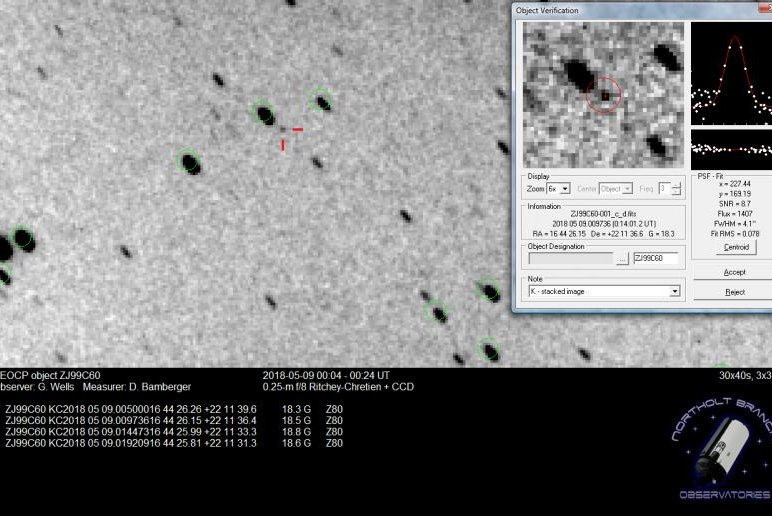May 15 (UPI) -- An asteroid astronomers lost track of for eight years has returned. The jumbo jet-sized space rock is set to skim by Earth on Tuesday night.
The asteroid will pass at roughly half the distance between the Earth and the moon, the closest flyby ever for an object this size.
"There are many close approaches from asteroids, [but] most are very small," Guy Wells, an astronomer at the Northolt Branch Observatories in London, told Newsweek. "Only very few objects of that size have ever been seen coming closer than the moon."
Scientists first spotted asteroid 2010 WC9 on November 30, 2010, but were only able to track it for a few weeks before it became too faint to see. Because scientists didn't have enough information about it's trajectory, they were unable to predict its orbital path and likely return date. The space rock was only recently rediscovered.
Astronomers have likened the asteroid's size to a commercial airliner and the Statue of Liberty. According to EarthSky, the space rock measures between 197 and 427 feet across.
The asteroid will reach its closest point to Earth, 126,419 miles away, at approximately 6:05 p.m. ET. The rock will whiz by at a speed of 28,655 miles per hour.
Though asteroid 2010 WC9 isn't all that big in relative terms, it is significantly larger than the Chelyabinsk meteor that entered Earth's atmosphere and exploded 19 miles above Russia's Chelyabinsk Oblast region with the force of 500,000 tons of TNT. The shockwave broke thousands of windows and sent hundreds of people to the hospital.
Unlike Chelyabinsk, 2010 WC9 will not enter Earth's atmosphere and poses no risk to Earth.
Tuesday night's flyby will be streamed live on Facebook by the Northolt Branch Observatories.















